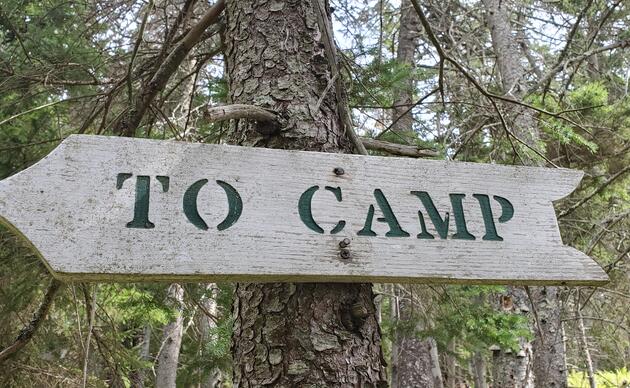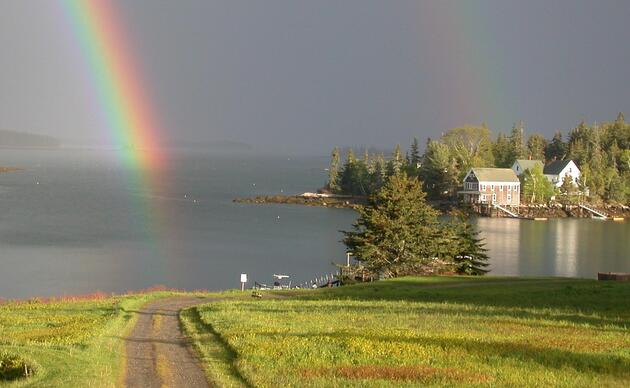Giving Seabirds a Helping Hand
Road Scholars assist Audubon Biologists to Improve Habitat for Maine Seabirds
Conservation work for rare and endangered seabirds often requires direct management of nesting habitat, and this is often difficult during the breeding season. Too much disturbance can expose seabird chicks to extreme weather, such as excessive sun, rain or chilling wind. For these reasons, many of the projects that are necessary for seabird management are not possible until the birds leave the nesting habitat by late August. This reality is the reason behind the development of the Road Scholar program Maine Seabird Biology and Conservation, offered each spring and fall since 2010
Maine Seabird Biology and Conservation.
Following extreme winds from Tropical Storms Irene and Lee this fall, we were very pleased by the calm waters and mild weather that we enjoyed for the September 11-16 program. Everything fell into place perfectly on our first day when all 22 participants landed on Eastern Egg Rock to tackle a variety of projects that would have been impossible earlier in the summer.
Projects for all skills There were plenty of projects available for varied skills. Always challenging are managing invasive plants crowding into the habitat of the endangered Roseate Terns and unfortunately huge amounts of plastic and other marine debris that accumulates in the seabird habitat. These projects were taken on with gusto by teams of ambitious volunteers that pulled weeds and removed numerous bags of trash from the shoreline.
Those with carpentry skills, were happy to rebuild two decomposing tent platforms and to recycle the wood to create new nesting burrows for Leach's Storm-petrels. The petrels were the only seabirds still breeding on the island in September and the group was thrilled to see a downy chick that was finding shelter under a board near the research camp. The success of this nestling under a board near the intern cabin inspired the design of new nesting structures built on site from the salvaged wood.
We created new tern habitat for Common and Roseate Terns at both Eastern Egg Rock and Stratton Island by securing large sections of outdoor carpet on the soil and sand to create open patches for tern nesting. Terns will not use habitat where the vegetation becomes to crowded or tall, as it is hard for them to find their chicks amid the tangled matts that result from congested invasive plants. Funding for the materials used in this project was provided by a grant from the North American Wetlands Conservation Act (NAWCA). [video:67061|caption:Creating new tern nesting habitat on Eastern Egg Rock Road Scholar volunteers used outdoor carpet as weed barriers to create tern nesting habitat. ]
Lobster Trap Removal
For years, our teams working on Stratton Island (Saco Bay- south of Portland) have hoped for help in removing the growing heaps of lobster trap debris on this beautiful island. This summer, Island supervisors Wayne McCabe, Jason Tappa and other interns hauled dozens of the heavy, rusting traps to the landing beach with hopes of a clean-up. Their help inspired Lucy Lacasse of the Prout's Neck Audubon Society to help organize a removal program. This is a complicated process because although the the traps were long-abandoned they were technically still property of the local fisherman. Once permission was secured from the Maine Marine Patrol, plans were set in place to move the traps off the beach. Road Scholar volunteers and Audubon staff loaded boats full of old lobster gear to be removed from the island.
Tom Toohey, manager of the Prout’s Neck Yacht Club, was key in making the effort a reality by enlisted the help of local lobsterman, Mark Coulston who took four boat loads of the gear on his boat to Pine Point, where lobster fishers could salvage some of the gear. Later, Harbor Master Dave Corbeau arranged for the remaining gear to be recycled. This was a tremendous effort and collaboration that will greatly reduced the risk of entanglement by Stratton Island birds.




